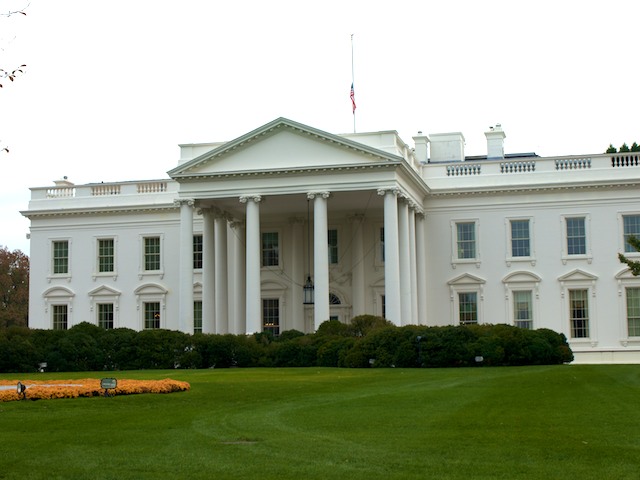
UPDATE COMPLETE TEXT – Osama Bin Laden is Dead

The White house has reported that Osama Bin Laden has been killed.
REMARKS BY THE PRESIDENT – ON OSAMA BIN LADEN
East Room – 11:35 P.M. EDT
THE PRESIDENT: Good evening. Tonight, I can report to the American people and to the world that the United States has conducted an operation that killed Osama bin Laden, the leader of al Qaeda, and a terrorist who’s responsible for the murder of thousands of innocent men, women, and children.
It was nearly 10 years ago that a bright September day was darkened by the worst attack on the American people in our history. The images of 9/11 are seared into our national memory — hijacked planes cutting through a cloudless September sky; the Twin Towers collapsing to the ground; black smoke billowing up from the Pentagon; the wreckage of Flight 93 in Shanksville, Pennsylvania, where the actions of heroic citizens saved even more heartbreak and destruction.
And yet we know that the worst images are those that were unseen to the world. The empty seat at the dinner table. Children who were forced to grow up without their mother or their father. Parents who would never know the feeling of their child’s embrace. Nearly 3,000 citizens taken from us, leaving a gaping hole in our hearts.
On September 11, 2001, in our time of grief, the American people came together. We offered our neighbors a hand, and we offered the wounded our blood. We reaffirmed our ties to each other, and our love of community and country. On that day, no matter where we came from, what God we prayed to, or what race or ethnicity we were, we were united as one American family.
We were also united in our resolve to protect our nation and to bring those who committed this vicious attack to justice. We quickly learned that the 9/11 attacks were carried out by al Qaeda — an organization headed by Osama bin Laden, which had openly declared war on the United States and was committed to killing innocents in our country and around the globe. And so we went to war against al Qaeda to protect our citizens, our friends, and our allies.
Over the last 10 years, thanks to the tireless and heroic work of our military and our counterterrorism professionals, we’ve made great strides in that effort. We’ve disrupted terrorist attacks and strengthened our homeland defense. In Afghanistan, we removed the Taliban government, which had given bin Laden and al Qaeda safe haven and support. And around the globe, we worked with our friends and allies to capture or kill scores of al Qaeda terrorists, including several who were a part of the 9/11 plot.
Yet Osama bin Laden avoided capture and escaped across the Afghan border into Pakistan. Meanwhile, al Qaeda continued to operate from along that border and operate through its affiliates across the world.
And so shortly after taking office, I directed Leon Panetta, the director of the CIA, to make the killing or capture of bin Laden the top priority of our war against al Qaeda, even as we continued our broader efforts to disrupt, dismantle, and defeat his network.
Then, last August, after years of painstaking work by our intelligence community, I was briefed on a possible lead to bin Laden. It was far from certain, and it took many months to run this thread to ground. I met repeatedly with my national security team as we developed more information about the possibility that we had located bin Laden hiding within a compound deep inside of Pakistan. And finally, last week, I determined that we had enough intelligence to take action, and authorized an operation to get Osama bin Laden and bring him to justice.
Today, at my direction, the United States launched a targeted operation against that compound in Abbottabad, Pakistan. A small team of Americans carried out the operation with extraordinary courage and capability. No Americans were harmed. They took care to avoid civilian casualties. After a firefight, they killed Osama bin Laden and took custody of his body.
For over two decades, bin Laden has been al Qaeda’s leader and symbol, and has continued to plot attacks against our country and our friends and allies. The death of bin Laden marks the most significant achievement to date in our nation’s effort to defeat al Qaeda.
Yet his death does not mark the end of our effort. There’s no doubt that al Qaeda will continue to pursue attacks against us. We must –- and we will — remain vigilant at home and abroad.
As we do, we must also reaffirm that the United States is not –- and never will be -– at war with Islam. I’ve made clear, just as President Bush did shortly after 9/11, that our war is not against Islam. Bin Laden was not a Muslim leader; he was a mass murderer of Muslims. Indeed, al Qaeda has slaughtered scores of Muslims in many countries, including our own. So his demise should be welcomed by all who believe in peace and human dignity.
Over the years, I’ve repeatedly made clear that we would take action within Pakistan if we knew where bin Laden was. That is what we’ve done. But it’s important to note that our counterterrorism cooperation with Pakistan helped lead us to bin Laden and the compound where he was hiding. Indeed, bin Laden had declared war against Pakistan as well, and ordered attacks against the Pakistani people.
Tonight, I called President Zardari, and my team has also spoken with their Pakistani counterparts. They agree that this is a good and historic day for both of our nations. And going forward, it is essential that Pakistan continue to join us in the fight against al Qaeda and its affiliates.
The American people did not choose this fight. It came to our shores, and started with the senseless slaughter of our citizens. After nearly 10 years of service, struggle, and sacrifice, we know well the costs of war. These efforts weigh on me every time I, as Commander-in-Chief, have to sign a letter to a family that has lost a loved one, or look into the eyes of a service member who’s been gravely wounded.
So Americans understand the costs of war. Yet as a country, we will never tolerate our security being threatened, nor stand idly by when our people have been killed. We will be relentless in defense of our citizens and our friends and allies. We will be true to the values that make us who we are. And on nights like this one, we can say to those families who have lost loved ones to al Qaeda’s terror: Justice has been done.
Tonight, we give thanks to the countless intelligence and counterterrorism professionals who’ve worked tirelessly to achieve this outcome. The American people do not see their work, nor know their names. But tonight, they feel the satisfaction of their work and the result of their pursuit of justice.
We give thanks for the men who carried out this operation, for they exemplify the professionalism, patriotism, and unparalleled courage of those who serve our country. And they are part of a generation that has borne the heaviest share of the burden since that September day.
Finally, let me say to the families who lost loved ones on 9/11 that we have never forgotten your loss, nor wavered in our commitment to see that we do whatever it takes to prevent another attack on our shores.
And tonight, let us think back to the sense of unity that prevailed on 9/11. I know that it has, at times, frayed. Yet today’s achievement is a testament to the greatness of our country and the determination of the American people.
The cause of securing our country is not complete. But tonight, we are once again reminded that America can do whatever we set our mind to. That is the story of our history, whether it’s the pursuit of prosperity for our people, or the struggle for equality for all our citizens; our commitment to stand up for our values abroad, and our sacrifices to make the world a safer place.
Let us remember that we can do these things not just because of wealth or power, but because of who we are: one nation, under God, indivisible, with liberty and justice for all.
Thank you. May God bless you. And may God bless the United States of America.
END 11:44 P.M. EDT
MY (RDS) NOTES FROM THE CONFERENCE CALL WITH SENIOR WHITE OFFICIALS
According the conference called held after the press conference with Senior White House officials that included CIA Director Leon Panetta;
* September 2010 last year, the US knew Bin Laden’s location. It was confirm in Feb 2011. During March 2011 there were five meetings headed by the president to discuss options.
* Several of the agencies represented stated they confirmed and rechecked all their facts before moving forward with the operation.
* They do not how long he had been staying there.
* They would not confirm it was a military team that pulled off the mission, but stated it was “a Small Team”
* No local officials or any International communities were notified.
* Three males were killed. They included Bin Laden and his son. One woman who was used as a shield. Bin Laden did put a fight.
* They detailed the compound, it had 12 to 18ft walls and was heavily fortified.
* There was a statement that stated his death comes at a time when the middle east is undergoing a major changes.
* The US has the body and is handling in accordance with Muslim traditions.
* Only a small group of US Government officials knew about the operation.
COMPLETE TRANSCRIPT PRESS BRIEFING BY
SENIOR ADMINISTRATION OFFICIALS – ON THE KILLING OF OSAMA BIN LADEN – Via Conference Call
MR. VIETOR: Thank you, everyone, for joining us, especially so late. We wanted to get you on the line quickly with some senior administration officials to talk about the operation today regarding Osama bin Laden. And with that I’ll turn it over to our first senior administration official.
SENIOR ADMINISTRATION OFFICIAL: Thanks for joining us, everybody, at this late hour. It’s much appreciated. From the outset of the administration, the President has placed the highest priority in protecting the nation from the threat of terrorism. In line with this, we have pursued an intensified, targeted, and global effort to degrade and defeat al Qaeda. Included in this effort has been a relentless set of steps that we’ve taken to locate and bring Osama bin Laden to justice. Indeed, in the earliest days of the administration, the President formally instructed the intelligence community and his counterterrorism advisors to make the pursuit of Osama bin Laden, as the leader of al Qaeda, as a top priority.
In the beginning of September of last year, the CIA began to work with the President on a set of assessments that led it to believe that in fact it was possible that Osama bin Laden may be located at a compound in Pakistan. By mid-February, through a series of intensive meetings at the White House and with the President, we had determined there was a sound intelligence basis for pursuing this in an aggressive way and developing courses of action to pursue Osama bin Laden at this location.
In the middle of March, the President began a series of National Security Council meetings that he chaired to pursue again the intelligence basis and to develop courses of action to bring justice to Osama bin Laden. Indeed, by my count, the President chaired no fewer than five National Security Council meetings on the topic from the middle of March — March 14th, March 29th, April 12th, April 19th, and April 28th. And the President gave the final order to pursue the operation that he announced to the nation tonight on the morning — Friday morning of April 29th.
The President mentioned tonight that the pursuit of Osama bin Laden and the defeat of al Qaeda has been a bipartisan exercise in this nation since September 11, 2001, and indeed, this evening before he spoke to the nation, President Obama did speak to President Bush 43 and President Clinton this evening to review with them the events of today and to preview his statement to the nation tonight.
And with that, I’ll turn it over to my colleague to go through some of the details. Thank you.
SENIOR ADMINISTRATION OFFICIAL: As you heard, the President ordered a raid earlier today against an al Qaeda compound in Abbottabad, Pakistan. Based on intelligence collection analysis, a small U.S. team found Osama bin Laden living in a large home on a secured compound in an affluent suburb of Islamabad. The raid occurred in the early morning hours in Pakistan and accomplished its objective. Osama bin Laden is now no longer a threat to America.
This remarkable achievement could not have happened without persistent effort and careful planning over many years. Our national security professionals did a superb job. They deserve tremendous credit for serving justice to Osama bin Laden.
Bin Laden was a sworn enemy of the United States and a danger to all humanity; a man who called for the murder of any American anywhere on Earth. His death is central to the President’s goal of disrupting, dismantling, and ultimately defeating al Qaeda and its violent allies. He was responsible for killing thousands of innocent men and women not only on 9/11, but in the 1998 East Africa embassy bombing, the attack of the USS Cole, and many other acts of brutality.
He was the leader of a violent extremist movement with affiliates across the globe that had taken up arms against the United States and its allies. Bin Laden’s most influential role has been to designate the United States as al Qaeda’s primary target and to maintain organizational focus on that objective. This strategic objective, which was first made in a 1996 declaration of jihad against Americans, was the cornerstone of bin Laden’s message.
Since 9/11, multiple agencies within our intelligence community have worked tirelessly to track down bin Laden, knowing that his removal from al Qaeda would strike a crippling blow to the organization and its militant allies. And last September the President was made aware of a compound in Abbottabad, where a key al Qaeda facilitator appeared to be harboring a high-value target. He received regular intelligence updates, as was just mentioned, on the compound in September, and he directed that action be taken as soon as he concluded that the intelligence case was sufficiently strong. A range of options for achieving the mission were developed, and on Friday he authorized the operation.
Now I’ll turn it to my colleagues to go through the intelligence.
SENIOR ADMINISTRATION OFFICIAL: Thank you. First I want to point out that today’s success was a team effort. It was a model of really seamless collaboration across our government. Since 9/11, this is what the American people have expected of us, and today, in this critical operation, we were able to finally deliver.
The operation itself was the culmination of years of careful and highly advanced intelligence work. Officers from the CIA, the NGA, the NSA all worked very hard as a team to analyze and pinpoint this compound. Together they applied their very unique expertise and capabilities to America’s most vexing intelligence problem, where to find bin Laden.
When the case had been made that this was a critical target, we began to prepare this mission in conjunction with the U.S. military. In the end, it was the matchless skill and courage of these Americans that secured this triumph for our country and the world. I’m very proud of the entire team that worked on this operation, and am very thankful to the President for the courage that he displayed in making the decision to proceed with this operation.
With that, let me turn to my colleague to give you details on the intelligence background.
SENIOR ADMINISTRATION OFFICIAL: Thank you. The bottom line of our collection and our analysis was that we had high confidence that the compound harbored a high-value terrorist target. The experts who worked this issue for years assessed that there was a strong probability that the terrorist that was hiding there was Osama bin Laden.
What I’d like to do is walk you through the key points in that intelligence trail that led us to that conclusion. From the time that we first recognized bin Laden as a threat, the CIA gathered leads on individuals in bin Laden’s inner circle, including his personal couriers. Detainees in the post-9/11 period flagged for us individuals who may have been providing direct support to bin Laden and his deputy, Zawahiri, after their escape from Afghanistan.
One courier in particular had our constant attention. Detainees gave us his nom de guerre or his nickname and identified him as both a protégé of Khalid Sheikh Mohammed, the mastermind of September 11th, and a trusted assistant of Abu Faraj al-Libbi, the former number three of al Qaeda who was captured in 2005.
Detainees also identified this man as one of the few al Qaeda couriers trusted by bin Laden. They indicated he might be living with and protecting bin Laden. But for years, we were unable to identify his true name or his location.
Four years ago, we uncovered his identity, and for operational reasons, I can’t go into details about his name or how we identified him, but about two years ago, after months of persistent effort, we identified areas in Pakistan where the courier and his brother operated. Still we were unable to pinpoint exactly where they lived, due to extensive operational security on their part. The fact that they were being so careful reinforced our belief that we were on the right track.
Then in August 2010, we found their residence, a compound in Abbottabad, Pakistan, a town about 35 miles north of Islamabad. The area is relatively affluent, with lots of retired military. It’s also insolated from the natural disasters and terrorist attacks that have afflicted other parts of Pakistan. When we saw the compound where the brothers lived, we were shocked by what we saw — an extraordinarily unique compound. The compound sits on a large plot of land in an area that was relatively secluded when it was built. It is roughly eight times larger than the other homes in the area.
When the compound was built in 2005, it was on the outskirts of the town center, at the end of a narrow dirt road. In the last six years, some residential homes have been built nearby. The physical security measures of the compound are extraordinary. It has 12- to 18-foot walls topped with barbed wire. Internal wall sections — internal walls sectioned off different portions of the compound to provide extra privacy. Access to the compound is restricted by two security gates, and the residents of the compound burn their trash, unlike their neighbors, who put the trash out for collection.
The main structure, a three-story building, has few windows facing the outside of the compound. A terrace on the third floor has a seven-foot wall privacy — has a seven-foot privacy wall.
It’s also noteworthy that the property is valued at approximately $1 million but has no telephone or Internet service connected to it. The brothers had no explainable source of wealth.
Intelligence analysts concluded that this compound was custom built to hide someone of significance. We soon learned that more people were living at the compound than the two brothers and their families. A third family lived there — one whose size and whose makeup matched the bin Laden family members that we believed most likely to be with Osama bin Laden. Our best assessment, based on a large body of reporting from multiple sources, was that bin Laden was living there with several family members, including his youngest wife.
Everything we saw — the extremely elaborate operational security, the brothers’ background and their behavior, and the location and the design of the compound itself was perfectly consistent with what our experts expected bin Laden’s hideout to look like. Keep in mind that two of bin Laden’s gatekeepers, Khalid Sheikh Mohammed and Abu Faraj al-Libbi, were arrested in the settled areas of Pakistan.
Our analysts looked at this from every angle, considering carefully who other than bin Laden could be at the compound. We conducted red team exercises and other forms of alternative analysis to check our work. No other candidate fit the bill as well as bin Laden did.
So the final conclusion, from an intelligence standpoint, was twofold. We had high confidence that a high-value target was being harbored by the brothers on the compound, and we assessed that there was a strong probability that that person was Osama bin Laden.
Now let me turn it over to my colleague.
SENIOR ADMINISTRATION OFFICIAL: Thank you. Earlier this afternoon, a small U.S. team conducted a helicopter raid on the compound. Considerable planning helped prepare our operators for this very complex mission. Senior officials have been involved in the decision-making and planning for this operation for months, and briefed the President regularly. My colleague has already mentioned the unusual characteristics of this compound. Each of these, including the high walls, security features, suburban location, and proximity to Islamabad made this an especially dangerous operation.
The men who executed this mission accepted this risk, practiced to minimize those risks, and understood the importance of the target to the national security of the United States.
I know you understand that I can’t and won’t get into many details of this mission, but I’ll share what I can. This operation was a surgical raid by a small team designed to minimize collateral damage and to pose as little risk as possible to non-combatants on the compound or to Pakistani civilians in the neighborhood.
Our team was on the compound for under 40 minutes and did not encounter any local authorities while performing the raid. In addition to Osama bin Laden, three adult males were killed in the raid. We believe two were the couriers and the third was bin Laden’s adult son.
There were several women and children at the compound. One woman was killed when she was used as a shield by a male combatant. Two other women were injured.
During the raid, we lost one helicopter due to mechanical failure. The aircraft was destroyed by the crew and the assault force and crew members boarded the remaining aircraft to exit the compound. All non-combatants were moved safely away from the compound before the detonation.
That’s all I have at this time. I’ll turn it back to my colleague.
SENIOR ADMINISTRATION OFFICIAL: We shared our intelligence on this bin Laden compound with no other country, including Pakistan. That was for one reason and one reason alone: We believed it was essential to the security of the operation and our personnel. In fact, only a very small group of people inside our own government knew of this operation in advance.
Shortly after the raid, U.S. officials contacted senior Pakistani leaders to brief them on the intent and the results of the raid. We have also contacted a number of our close allies and partners throughout the world.
Sine 9/11, the United States has made it clear to Pakistan that we would pursue bin Laden wherever he might be. Pakistan has long understood that we are at war with al Qaeda. The United States had a legal and moral obligation to act on the information it had.
And let me emphasize that great care was taken to ensure operational success, minimize the possibility of non-combatant casualties, and to adhere to American and international law in carrying out the mission.
I should note that in the wake of this operation, there may be a heightened threat to the homeland and to U.S. citizens and facilities abroad. Al Qaeda operatives and sympathizers may try to respond violently to avenge bin Laden’s death, and other terrorist leaders may try to accelerate their efforts to strike the United States. But the United States is taking every possible precaution to protect Americans here at home and overseas. The State Department has sent guidance to embassies worldwide and a travel advisory has been issued for Pakistan.
And without a doubt, the United States will continue to face terrorist threats. The United States will continue to fight those threats. We have always understood that this fight would be a marathon and not a sprint.
There’s also no doubt that the death of Osama bin Laden marks the single greatest victory in the U.S.-led campaign to disrupt, dismantle, and defeat al Qaeda. It is a major and essential step in bringing about al Qaeda’s eventual destruction.
Bin Laden was al Qaeda’s only (inaudible) commander in its 22-year history, and was largely responsible for the organization’s mystique, its attraction among violent jihadists, and its focus on America as a terrorist target. As the only al Qaeda leader whose authority was universally respected, he also maintained his cohesion, and his likely successor, Ayman al-Zawahiri, is far less charismatic and not as well respected within the organization, according to comments from several captured al Qaeda leaders. He probably will have difficulty maintaining the loyalty of bin Laden’s largely Gulf Arab followers.
Although al Qaeda may not fragment immediately, the loss of bin Laden puts the group on a path of decline that will be difficult to reverse.
And finally, it’s important to note that it is most fitting that bin Laden’s death comes at a time of great movement towards freedom and democracy that is sweeping the Arab world. He stood in direct opposition to what the greatest men and women throughout the Middle East and North Africa are risking their lives for: individual rights and human dignity.
MR. VIETOR: With that we’re ready to take a couple questions.
Q One question. You said “a small U.S. team.” Were these military personnel, can you say, or non-military?
SENIOR ADMINISTRATION OFFICIAL: Can’t go into further details at this time; just a small U.S. team.
Q Good morning. Can you tell us specifically what contact there was with bin Laden at the compound? You referred to someone using a woman as a shield that was not bin Laden. But how was he killed? Where? What occurred at the compound?
SENIOR ADMINISTRATION OFFICIAL: As the President said this evening, bin Laden was killed in a firefight as our operators came onto the compound.
Q Thank you. Just to go back to what you were talking about with the attacks in response to this operation, are you hearing any specific threats against specific targets?
SENIOR ADMINISTRATION OFFICIAL: No. But any type of event like this, it is very prudent for us to take measures so that we can ensure that the security measures that we need to institute here and throughout the world are in place. This is just something that we normally would do. We don’t have any specific threats at this time related to this. But we are ensuring that every possible precaution is taken in advance.
Q Yes, hey, how are you doing? My question would be, what was the type of the helicopter that failed? And what was the nature of that mechanical failure?
SENIOR ADMINISTRATION OFFICIAL: Can’t go into details at this time.
SENIOR ADMINISTRATION OFFICIAL: We didn’t say it was mechanical.
Q Was bin Laden involved in firing himself or defending himself? And then any chronology of the raid itself?
SENIOR ADMINISTRATION OFFICIAL: He did resist the assault force. And he was killed in a firefight.
Q Thank you. Thank you for taking this call. Can you give me a comment on the very fact that Osama bin Laden was just in Islamabad — and has long been (inaudible) Afghanistan (inaudible) also from India, that Osama bin Laden is hiding somewhere near Islamabad? What does it signify, that? Does it signify any cooperation or any kind of link that he had with establishments in Pakistan?
SENIOR ADMINISTRATION OFFICIAL: As the President said, Pakistani cooperation had assisted in this lead, as we pursued it. So we’re continuing to work this issue right now. We are very concerned about — that he was inside of Pakistan, but this is something that we’re going to continue to work with the Pakistani government on.
Q But the very fact you didn’t inform the Pakistani authorities — did you have any suspicion that if you informed them, the information might lead somewhere?
SENIOR ADMINISTRATION OFFICIAL: An operation like this that is conducted has the utmost operational security attached to it. I said that we had shared this information with no other country, and that a very, very small group of individuals within the United States government was aware of this. That is for operational security purposes.
SENIOR ADMINISTRATION OFFICIAL: I would also just add to that that President Obama, over a period of several years now, has repeatedly made it clear that if we had actionable intelligence about Osama bin Laden’s whereabouts, we would act. So President Obama has been very clear in delivering that message publicly over a period of years. And that’s what led President Obama to order this operation. When he determined that the intelligence was actionable and the intelligence case was sufficient, he gave us high confidence that bin Laden indeed was at the compound.
Q Thank you. What is going to happen next? And what is the U.S. going to do with bin Laden’s body?
SENIOR ADMINISTRATION OFFICIAL: We are ensuring that it is handled in accordance with Islamic practice and tradition. This is something that we take very seriously. And so therefore this is being handled in an appropriate manner.
MR. VIETOR: Great, thanks. Just to remind everyone, this call is on background, as senior administration officials. We have time for one more question, and we’re going to go to bed.
Q Do you have a sense of the vintage of the compound and how long bin Laden had been there?
SENIOR ADMINISTRATION OFFICIAL: The compound has been in existence for roughly five years, but we don’t know how long bin Laden lived there. We assess that the compound was built for the purpose of harboring him. But again, don’t know how long he’s been there.
MR. VIETOR: Great, thank you all. We’ll talk more tomorrow.
END 12:24 A.M. EDT


















